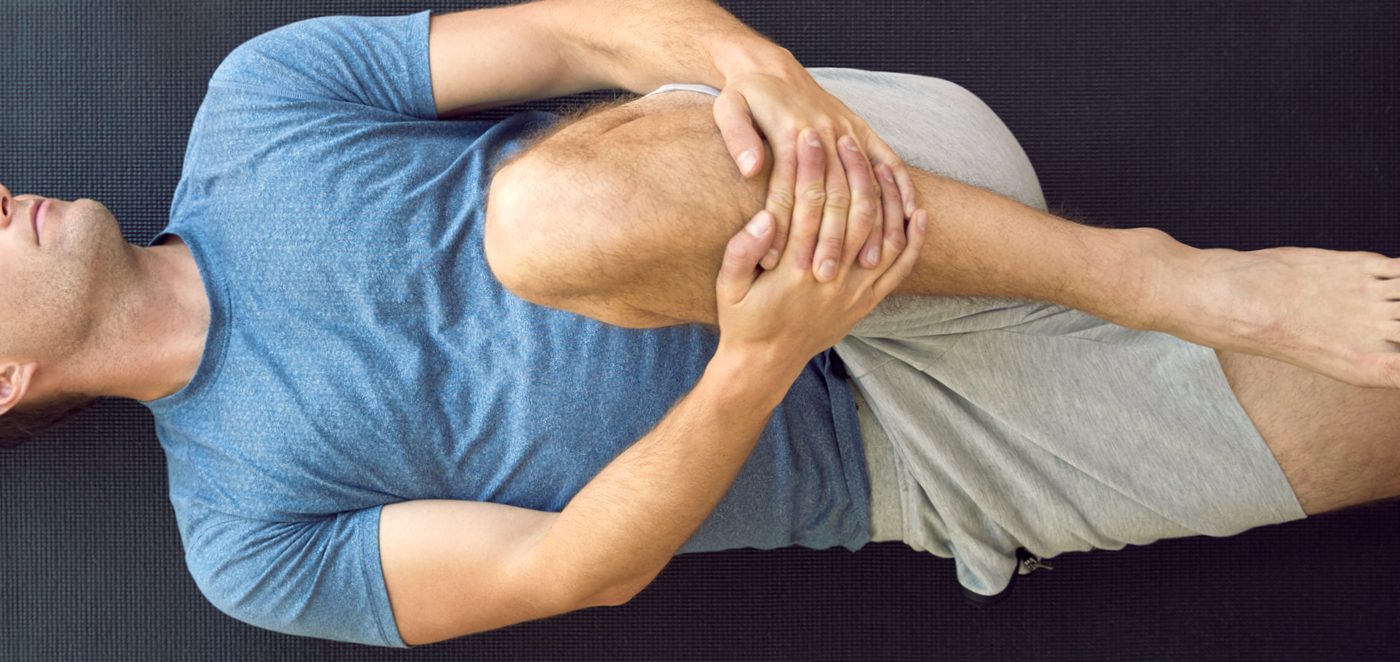The ten pairs of healing qualities in practice

Now you have an idea of how the three doṣas—vāta, pitta, and kapha—manifest in people. You’ve learned that each doṣa has particular qualities (guṇas) and how you might spot those qualities in balance and in excess. In this blog post, we’ll explore how to turn your observations into more effective recommendations for your clients.
Let me start with a disclaimer: If you haven’t studied Āyurveda in depth, of course you’ll want to stay within your scope of practice as a yoga teacher or therapist—don’t make specific diet or herbal recommendations, for example, if you’re not trained to do so. If your client really wants to explore Āyurvedic practices to address the root cause of their suffering, refer them to a qualified practitioner who can help them. But you can certainly use what you’ve learned about the doṣas when offering suggestions related to lifestyle, āsana practice, prāṇāyāma, and meditation.
Back to the guṇas then. Let’s remind ourselves of which ones correspond to which doṣa: Airy vāta is clear, cold, dry, light, rough, subtle, and mobile/irregular. Fiery pitta is sharp, oily, light (as in bright), liquid, spreading, and hot. And earthy kapha is hard, heavy, gross, cold, oily, liquid, dense, soft, smooth/slimy, stable/ static, and cloudy/sticky. Seeing them listed like this, it may be occurring to you that these qualities relate to each other, and, in particular, that some are polar opposites.
In fact, Ayurveda groups the gunas that correspond to the doṣas into 10 pairs of healing qualities, as follows:
| Heavy | Light |
| Slow/Dull | Sharp |
| Hot | Cold |
| Oily | Dry |
| Smooth/Slimy | Rough |
| Dense | Liquid |
| Soft | Hard |
| Stable/Static | Mobile |
| Subtle | Gross |
| Cloudy/Sticky | Clear |
How do we use these healing pairs? By remembering Āyurveda’s fundamental approach to treatment: LIKE INCREASES LIKE, OPPOSITES BALANCE. In other words, if your vāta client is cold all the time, they shouldn’t be guzzling iced coffee, which will increase cold quality. Instead, they need a cup of something hot to balance excess cold. If your kapha client is stuck and wants to lie on the couch all day, they need to get moving: mobile quality balances excess static. And if your pitta client is hot, hot, hot (physically and emotionally), they need to cool down—cold balances excess heat. Is it really that simple? Not quite—many clients have more than one doṣa that’s aggravated, and in that case therapeutic choices can be more complex, especially if your client has both vāta and pitta derangement. Why? Because what will soothe pitta (e.g. cooling foods) may aggravate vāta, and vice versa. In these cases, an Āyurvedic professional might address vāta doṣa with lifestyle recommendations and pitta with diet.
But there are some simple general principles to guide you. One of my teachers, Mary Thompson (former long-time faculty at the California College of Āyurveda), put it this way: Vāta folks need to stay grounded; pitta folks have to learn compassion, and kapha folks need to learn to let go. When working with clients as a yoga therapist or teacher, if you remember these overarching principles, you can go a long way towards helping a lot of people.

Let’s get practical. Suppose you have a client who is clearly vāta aggravated (and sad to say, almost everyone with a smartphone is vāta aggravated due to the constant stimulation and distraction they hold in the palm of their hands and the hectic pace of modern life). What are examples of recommendations that would ground? Anything that promotes heavy and stable qualities. Something as simple as a weighted blanket on your client’s bed, or a sandbag on their belly during savāsana. A floor-based āsana practice where your client stays connected to the earth and cultivates stillness by holding a posture and focusing on their breathing instead of doing a face-paced vinyasa flow. Prāṇāyāma practices that encourage stability and balance, e.g. nāḍī shodhana or pratiloma ujjāyī. Lifestyle choices that promote routine—regular mealtimes, regular sleep/wake times instead of a chaotic schedule that’s never the same from day to day. A slow gentle walk in the park on a warm day that’s not too windy, punctuated by sitting on a bench to watch the world go by. All of these choices will tether and ground your vāta-deranged client. They may balk at these suggestions of course—they won’t want to give up their fast-paced vinyasa flow, for example. It will be your job to make these recommendations as attractive as possible (regardless of which doṣic imbalance you’re seeing) and to help your client stay with them long enough to assess their effect. Figure out, with your client, what appeals to them, and start small so they can be successful. And then use common sense regarding other qualities that may be aggravated, remembering that like increases like and opposites balance. For example, what would help dry, rough skin? Something unctuous and smooth, which is precisely what massage with warm oil (abhyanga) provides.

On to pitta. Learning compassion speaks, of course, to dulling the sharp, hypercritical nature of pitta and promoting a gentler way of moving through the world. This is a foreign concept to many of the high-striving, ambitious pitta clients I see, for whom deep relaxation practices, loving-kindness meditation, yoga nidra (especially with a sankalpa or intention to embody compassion), or other forms of meditation that promote surrendering to what is, can be powerful tools of transformation. Staying cool and calm is the way to soothe excess hot and sharp qualities. Look at your client’s lifestyle choices–do they love hot yoga or playing tennis at noon on a broiling summer’s day? Those activities will, without question, aggravate pitta. See if you can gently nudge them towards more cooling and less competitive choices. Are your pitta clients routinely staying up past 10:30 PM to send a few more emails or finish some projects? If so, they’re likely to get a second wind and find it even more difficult to go to sleep. You might encourage an evening routine (relaxing breath practices, meditation, gentle āsana) to help them wind down before bed. Wearing white, blue, and green, moon bathing, or spending time by water in a forest setting–all these are cooling activities. Essential oils like lemongrass and sandalwood, as well as rose water, can tame fiery qualities–rose, in particular, is renowned not just for its cooling properties but for increasing patience and compassion. And don’t forget Śītalī or śītkārī prāṇāyāma, both cooling techniques.

What about our kapha aggravated friends? Holding tightly to people, things, and places is a manifestation of being stuck, of accumulation. Letting go means moving, literally and figuratively. Where vāta and pitta excess often subsides by slowing down, relaxing, and calming, kapha aggravation needs just the opposite–activity. This could be in the form of regular vigorous exercise: any kind will do, and especially those that require endurance–remember that once kapha types get over their inertia, they keep going! It’s their superpower. Hiking, biking, jogging, and Surya Namaskar are all suitable, along with ujjāyī breathing to help heat up the cool clamminess of kapha. Or, activity could mean trying something new, like taking a class or going on an adventure with a friend or a loved one. Find out about your client’s sleep habits–if they’re going to bed early and sleeping late, encourage them to stay up a little later and get up before sunrise to counteract all that heavy quality. A cup of coffee in the morning can be great medicine for a client with kapha excess precisely because it’s a stimulant. And whereas pitta-aggravated clients have to go easy on pungent and spicy foods, kapha clients will find the heat and warmth helpful in getting their internal systems moving. Aromas like lemon and eucalyptus, which are warming, light, and penetrating, are also excellent ways to counteract the heavy, dull, stuck qualities of aggravated kapha.
Thank you for going on this journey with me to explore aspects of Āyurvedic assessment. The next time you see a client, perhaps you’ll be able to use a touch of Āyurveda’s wisdom to supplement your skills as a yoga therapist and approach their concerns from a broader perspective and intuit recommendations that will help them find balance and harmony.
Check out Lisa’s Real-Life Case Studies video series, available exclusively to Sequence Wiz members. Learn more about Case Studies at Sequence Wiz >)

Introduction: Three pillars of an Āyurvedic assessment and how to use them
Part 1. Techniques for increasing awareness of the pelvic floor for a student exhibiting vata imbalance
Part 2. Techniques for dealing with stress, neck tension, and loss of stability in life
Part 3. Assessing life habits in preparation for conception
Part 4. The power of lifestyle changes in creating stability and dosha balance
About Lisa
Lisa Sack, C-IAYT, E-RYT-500, C-AHC, is a certified Viniyoga® therapist, Āyurvedic Health Counselor, and Hanna Somatic Educator®. She practices yoga and yoga therapy in the tradition of TKV Desikachar, as taught to her by Gary Kraftsow, founder of the American Viniyoga Institute™. Lisa trained as an Āyurvedic Health Counselor in the lineage of Dr. Vasant Lad through New Moon Āyurveda and Joyful Belly School of Āyurveda. She offers Āyurvedic consultations, yoga therapy, and somatic education both in person and online. Visit her at Clear Sight Yoga & Ayurveda.










